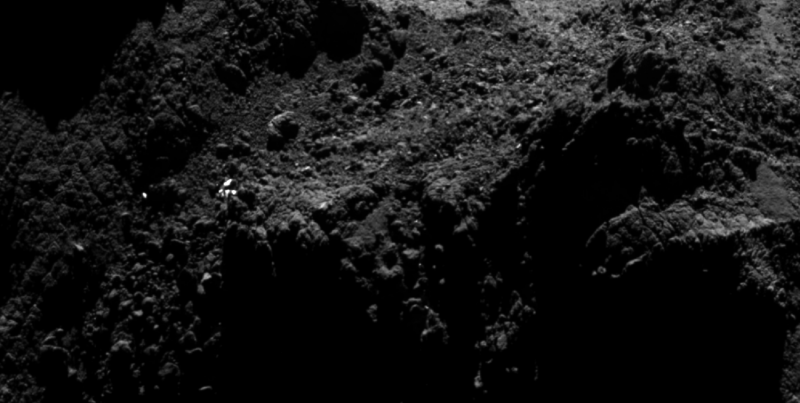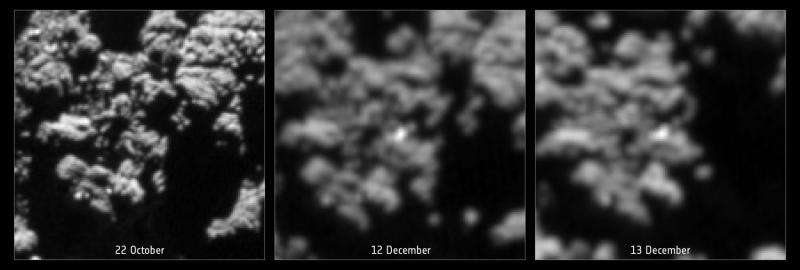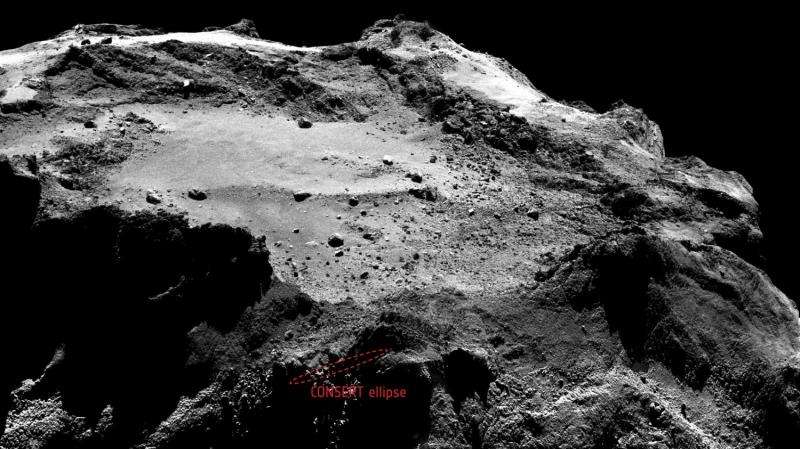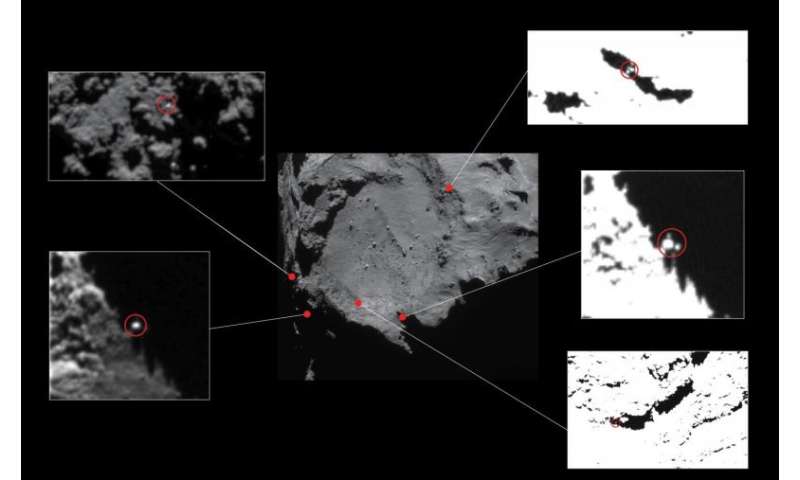Rosetta team spots glint of light that could be comet lander

The European Space Agency says it may have caught a glimpse of its missing comet lander.
Philae became the first spacecraft land on a comet, but its exact location has been a mystery since it touched down on the surface of 67P in November.
ESA said Thursday that scientists analyzed images and other data from the lander and mother ship Rosetta. They identified several possible locations including one bright spot described as "a good candidate for the lander."
Rosetta was unable to fly by the site for a closer look since December because the comet is releasing gas and dust as it nears the sun in the next months.
Chances of finding Philae will be boosted if the lander gathers enough solar energy to wake up and send a signal.
-

‘Before’ and ‘after’ comparison images of a promising candidate located near the CONSERT ellipse as seen in images from the OSIRIS Narrow-Angle Camera. Each box covers roughly 20 x 20 m on Comet 67P/C-G. The left-hand image shows the region as seen on 22 October (before the landing of Philae) from a distance of about 10 km from the centre of Comet 67P/C-G, while the centre and right-hand images shows the same region on 12 and 13 December from 20 km (after landing). The candidate is only seen in the two later images. The illumination conditions are broadly similar in the three images and the same topography can be recognised in each case. The difference in distance at which the images were taken yields a difference in resolution and thus the December images have been resampled and interpolated to match the scale of the October image. As a result, the candidate covers more pixels calculated for a Philae-sized object seen by the OSIRIS narrow-angle camera from a distance of 18 km to the surface. Credits: ESA/Rosetta/MPS for OSIRIS Team MPS/UPD/LAM/IAA/SSO/INTA/UPM/DASP/IDA -

The current 16 x 160 m CONSERT ellipse overlaid on an OSIRIS narrow-angle camera image of the same region. The location and size of the ellipse is not accurate at the pixel level, and may also change as further CONSERT data analysis proceeds and more detailed comet shape models become available. The OSIRIS image is a slightly cropped 2 x 2 mosaic of NAC images taken from a distance of approximately 18 km from the surface of the comet on 13 December 2014. At this distance, the resolution of NAC is approximately 34 cm per pixel, and the full mosaic covers roughly 1.3 km. Credit: Ellipse: ESA/Rosetta/Philae/CONSERT; Image: ESA/Rosetta/MPS for OSIRIS Team MPS/UPD/LAM/IAA/SSO/INTA/UPM/DASP/IDA -

Approximate locations of five lander candidates initially identified in high-resolution OSIRIS Narrow Angle Camera images taken in December 2014, from a distance of about 20 km from the centre of Comet 67P/C-G. The candidates are circled in the close-ups, identifying Philae-sized features approximately 1–2 m across. The contrast has been stretched in some of the images to better reveal the candidates. All but one of these candidates (top left) have subsequently been ruled out of consideration due to constraints including the reconstructed lander trajectory and topography at the landing site. The candidate at top left lies near to the current CONSERT ellipse. Credit: Centre image: ESA/Rosetta/NAVCAM – CC BY-SA IGO 3.0; insets: ESA/Rosetta/MPS for OSIRIS Team MPS/UPD/LAM/IAA/SSO/INTA/UPM/DASP/IDA
More information: blogs.esa.int/rosetta/2015/06/ … st-to-find-philae-2/
© 2015 The Associated Press. All rights reserved.





















